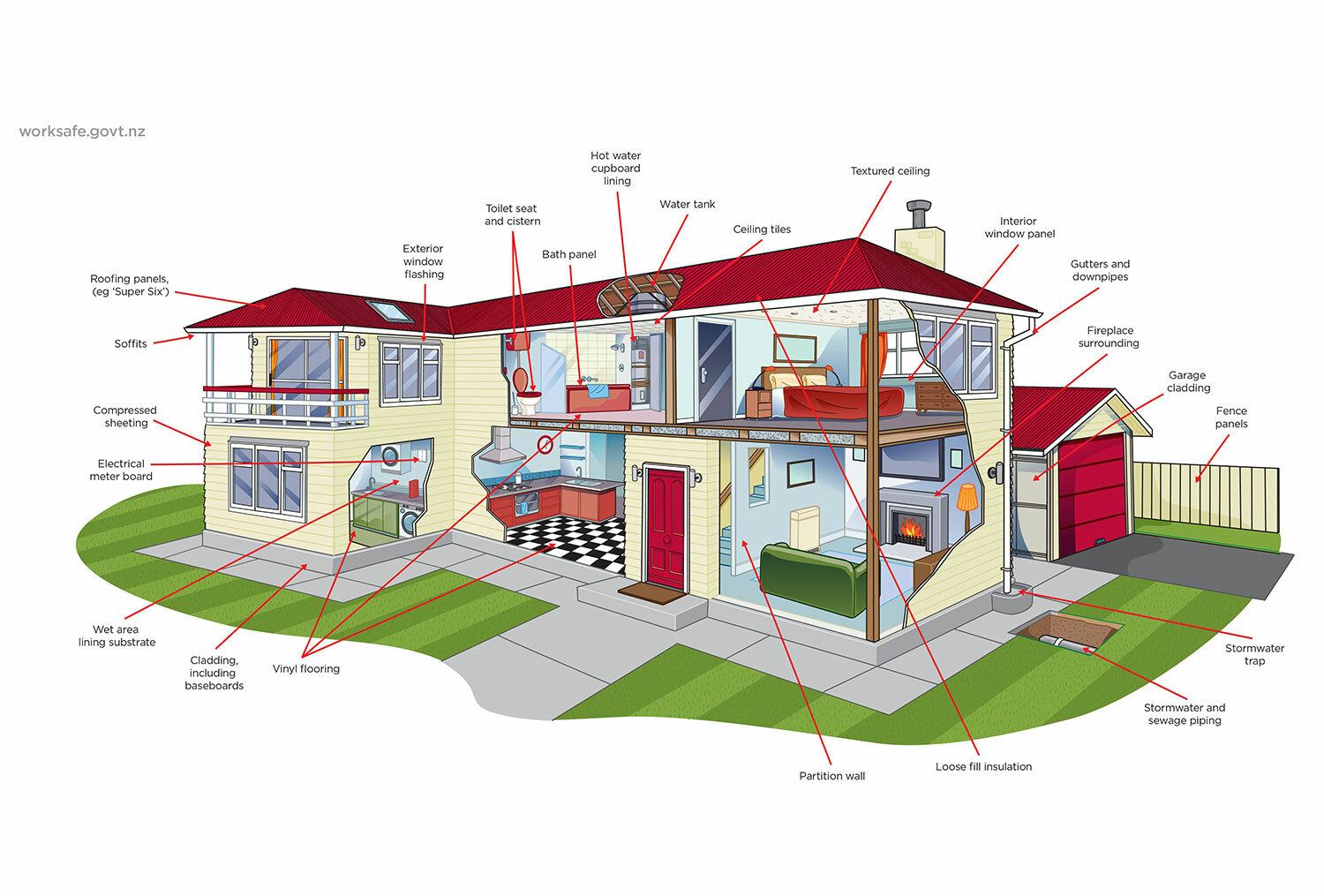
Asbestos was used extensively in building materials throughout the 20th century. Buildings constructed prior to 2000 are likely to contain asbestos materials. However, the final ban on the importation of asbestos into New Zealand was not enforced until 2016. Therefore it is worth considering all buildings when discussing potential asbestos risks.
In a typical residential construction, asbestos containing materials are likely to be found in the following. Although this is not an exhaustive list, some builders may have used asbestos materials in other areas as well.
Thermoplastic vinyl floor tiles are often found in wet areas such as kitchens, bathrooms and laundry rooms. They are usually square and consist of various colours.
Asbestos paper backed vinyl sheet is also commonly found in wet areas of a house. It is also often hidden underneath a more modern layer of flooring. This is considered a friable product (we will discuss this shortly) and contains 100% asbestos.
Although fibre cement wall and ceiling linings are most commonly found in the exterior materials, they have been known to have been installed in other areas, particularly wet areas. They are usually concealed and look identical to GIB plasterboard or soft board ceiling/wall panels when painted the same colour. Fibre cement can sometimes be distinguished by their sound when knocked and by the visual golf ball effect on the back.
Decorative textured coatings, also known as popcorn and artex ceilings, were widely used up to the 1990’s. They are a non-homogenous product, meaning the asbestos within the plaster and paint is non evenly distributed. This is because it was hand mixed on site during application. The product can also be found on walls as well as ceiling. This is also a friable product.
Asbestos insulation boards (AIB) or Millboard is a friable product and is known for its high resistance to fire. For this reason, it can be found surrounding fuse boards, chimneys, fireplaces etc.
Resinous fuse boards and Textile flash guard within fuses are a common find in New Zealand homes.
Known for its insulating properties loose fill insulation may have been applied within wall, ceiling and floor cavities. This is a highly friable product.
As mentioned above, AIB and millboard were excellent fire insulators and also used in areas as a fire break.
Insulating rope was used in a similar way to asbestos insulation board. It is most commonly found within fireplaces and chimneys.
Pipe and boiler lagging, although more often found in commercial buildings, has been known to be found in residential properties also. It is frequently underneath a more modern layer of lagging like fibreglass.
Exteriors
Fibre cement has been used extensively throughout New Zealand buildings. It has several appearances and forms such as flat sheet or profiled. As a compressed flat sheet, it is likely to be found as baseboards, cladding, decks and soffits. In a corrugated profiled form, asbestos materials likely appear as roofing, cladding and fencing.
Asbestos was also mixed with bitumen and used in decramastic roofing tiles and waterproof roof membranes on flat or parapet roofs.